SLV Suspension Kit
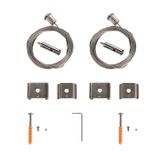
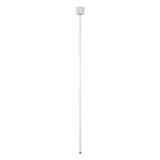
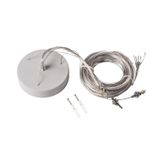
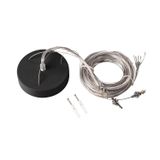


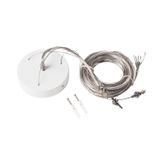
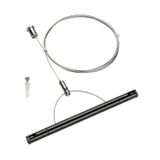
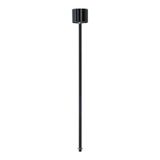
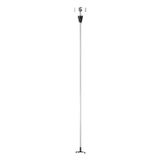
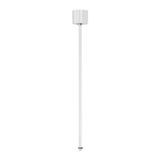
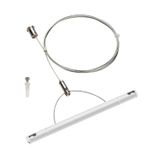



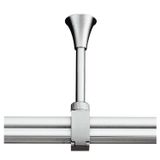
slv suspension kit range and installation purpose
SLV suspension kits anchor pendant and linear luminaires with predictable mechanics and neat ceiling lines in offices, retail, hospitality, and education. Sets are available as wire, rod, or hybrid assemblies to suit heights from roughly 0.3 m up to 3 m, with Safe Working Load values validated at a 5:1 safety factor. Typical stainless wire is 1.2–1.5 mm with nickel or black finishes; rigid tubes handle higher point loads where absolutely straight drops are required. Canopies manage strain relief and mains entry, and the geometry keeps conductors clear of the wire path so installers don’t fight for space during termination.
slv pendant light suspension options and load ratings
Single-point and twin-point variants cover light bars, cylinders, and panel luminaires. Cable sets commonly support 2–5 kg per point; rod formats can exceed 10–15 kg when paired with the matching canopy and anchor. Self-grip clutches allow one-hand heighting, then lock with a positive bite; fine trim is typically ±30 mm after power-up without needing to unload the luminaire. For multi-drop runs, factory-equalized pairs keep fittings level across long sightlines and reduce time on the ladder.
slv ceiling mounting kits geometry and anchors
SLV ceiling mounting kits ship with threaded cones or push-lock heads that land in concrete, brick, or plasterboard using metric anchors sized to the substrate. On gypsum, spreader dowels with M4/M5 threads prevent rotation; on concrete, metal expansion anchors take higher torque and deliver superior pull-out. The through-hole diameters align with common junction boxes, and the canopy volume accepts compact drivers if thermal limits allow—leave 10–15 mm air each side of convection-cooled gear so Tc stays inside the data sheet.
slv suspension accessories cable routing and finishes
Complementary parts include offset couplers, joiners for continuous lines, side-exit caps to avoid tight bends, and decorative sleeves that mask terminations on exposed ceilings. Feed hardware routes 2×0.75–1.0 mm² or 3×1.0–1.5 mm² conductors with proper strain relief; axial or lateral cable exits are selected to suit the drop direction. Finish options—white, black, brushed—match the SLV luminaire palette so tracks, canopies, and drops read as one system in the room.
Technical specifications and standards
Wire tensile grades are specified for low creep and clean cut ends; ferrules are stainless or plated brass to avoid galvanic staining on canopies. Height range is dictated by cable length (commonly 1.5–3.0 m supplied) and clutch travel. Expect typical SWL markings on the clutches and a QR/label in the bag with the torque and substrate notes. Electrical insulation follows the luminaire class and supply scheme; where the pendant carries a driver in the canopy, plan for inrush on shared circuits and publish PF/THD from the driver sheet for the design record. Mechanical parts track EN 60598 expectations for suspension integrity; installers usually log a proof-pull on a sample point during pre-hand-over checks.
Applications and compatibility
In retail, single-point cable kits keep cylinders visually light over tills while twin-point drops stabilize linear pendants over price rails. Open-plan offices benefit from rod sets where long datum lines make cable sway visible. Hospitality prefers side-exit canopies to hide bends near beams. The sets interface cleanly with SLV 230 V tracks, surface junctions, and shallow boxes; check the canopy footprint against ceiling tiles or decorative roses to avoid rework.
Integration with other SLV products
The suspension hardware mates with SLV linear luminaires, downlight conversions with pendant kits, and track-mount fixtures using dedicated adapters. For multi-row layouts, combine equal-length drops with SLV power feeds and corner joiners so electrics and mechanics share the same grid. Where dimming is specified, pair with DALI or phase-cut drivers housed in matching canopies; keep loop currents and inrush within the channel plan and document minimum stable dim level for cleaners and night shifts.
Selection criteria for B2B clients
Choose wire versus rod by visual intent and load. Verify SWL per point against the luminaire mass plus accessories, then apply the 5:1 factor with margin for site tolerances. Confirm ceiling substrate and anchor type early—gypsum needs spreaders; concrete takes expansion anchors; composite ceilings benefit from long-thread glands to avoid star-cracking. For long continuous lines, specify feed spacing and drop positions on the reflected ceiling plan, and order extra couplers and spare canopies for late changes. Where levelness is critical, request paired, pre-matched cables from the factory to cut aiming time.
Advantages of working with Bankoflamps
You get individual B2B pricing and a named account manager who aligns suspension sets, canopies, power feeds, and adapter parts to your single-line and room sheets. Our portal shows live EU stock by warehouse with fast quotes in about an hour, listing EAN/MPN, load data, anchor guidance, and cable lengths so selections don’t drift during coordination. Orders can be placed by code, with downloadable, always-current price lists and stable validity windows. We provide lead-time tracking, order status, and purchase-history analytics; trusted clients can use post-payment up to 30 days. Consolidated shipments by line and zone reduce site sorting and freight, and we service projects in France, the Baltics, Germany, Spain, Italy, Belgium, and the Netherlands.